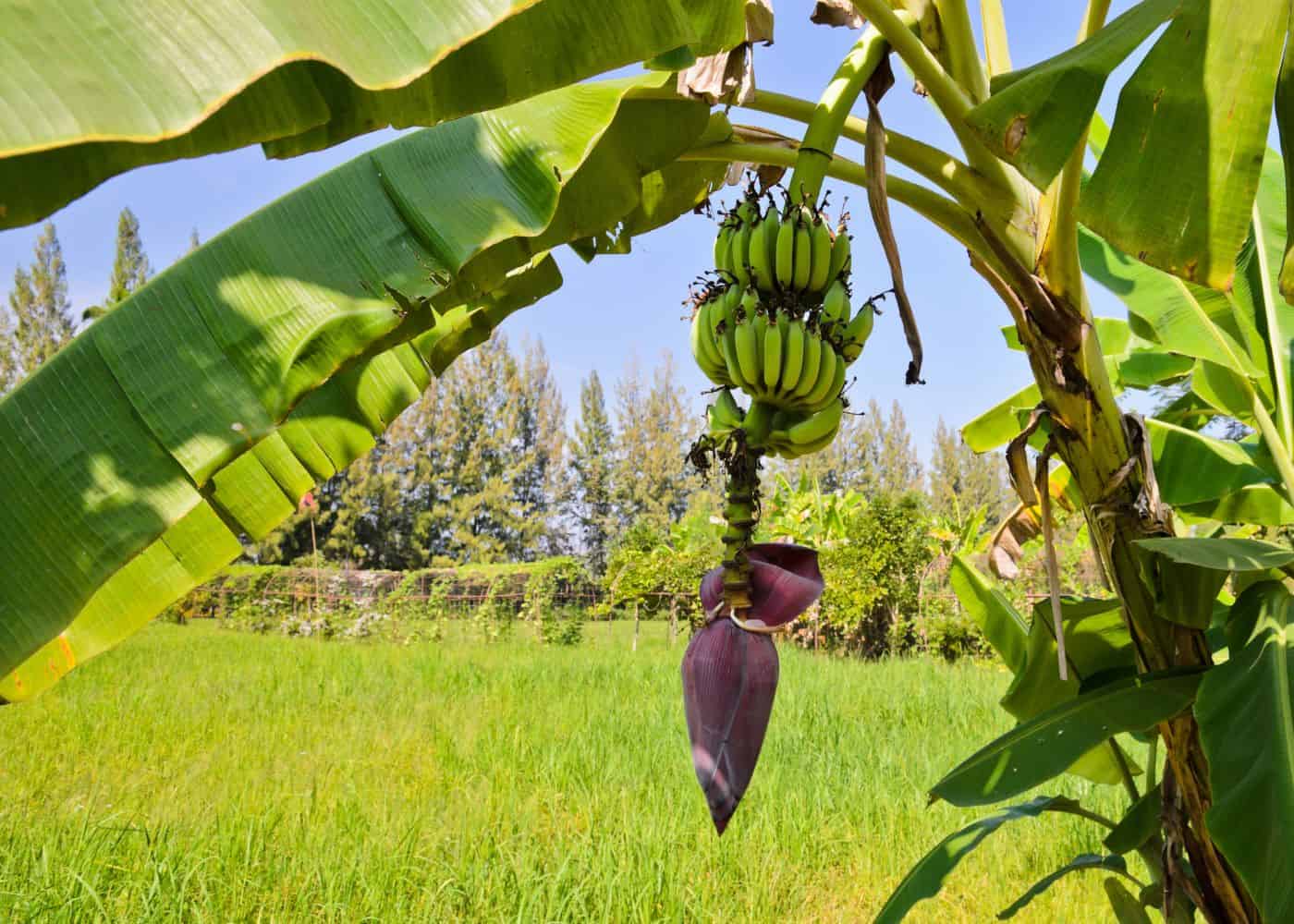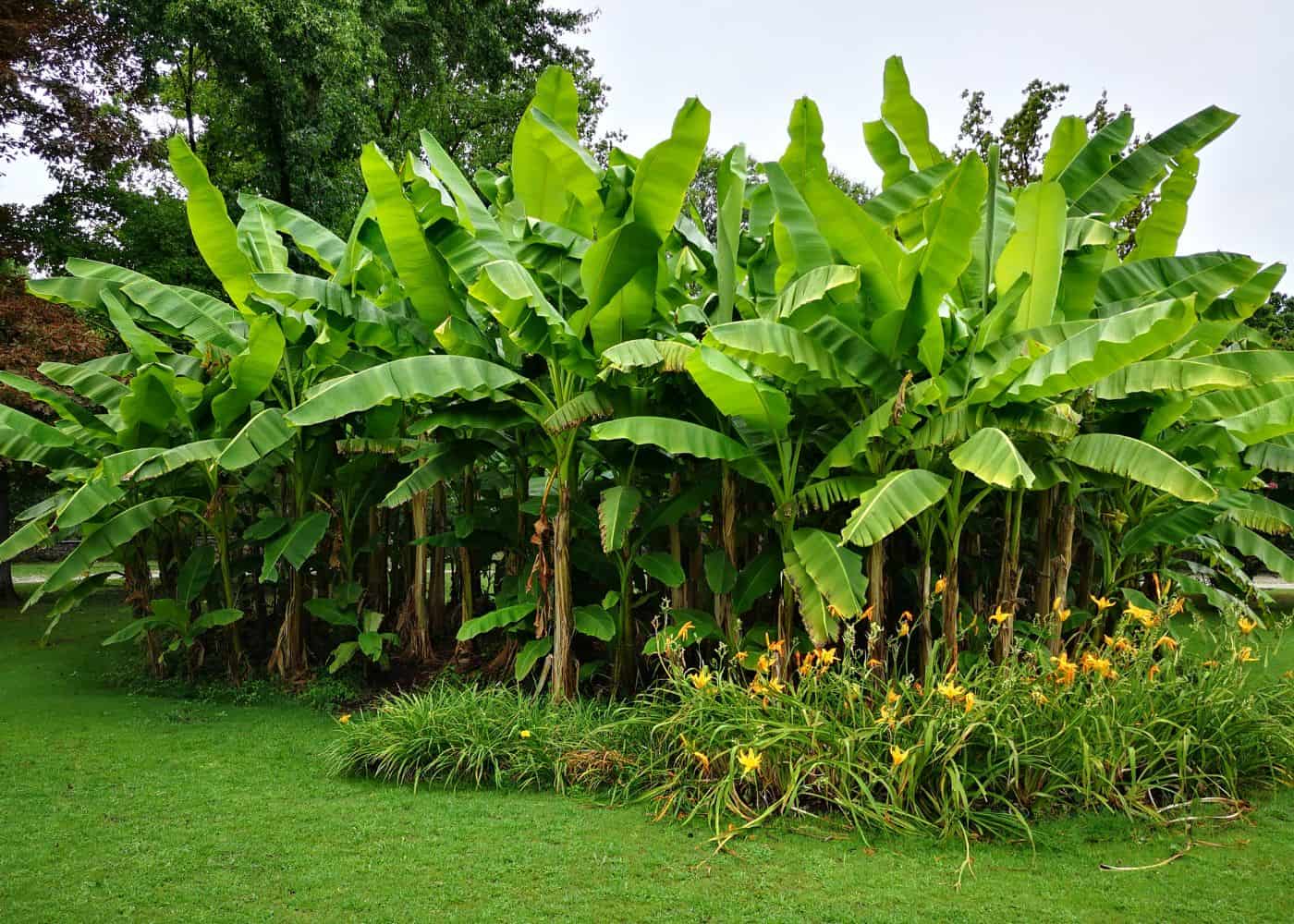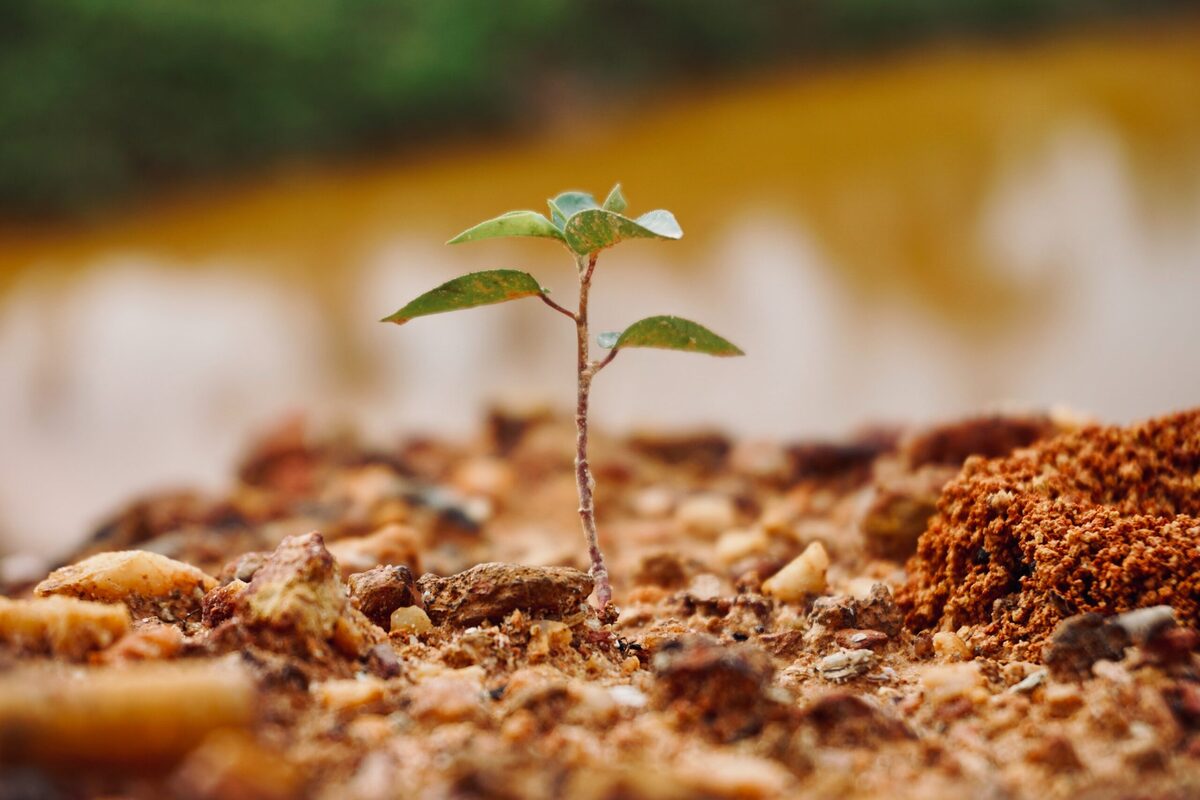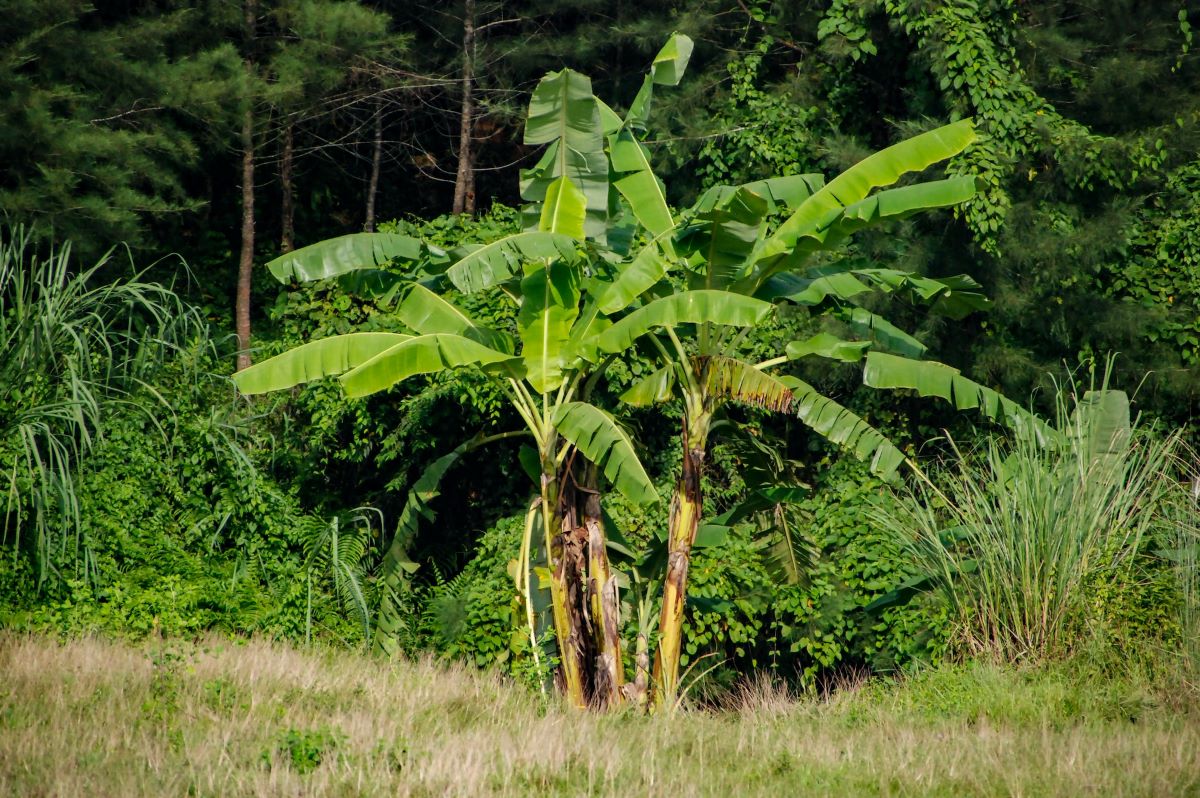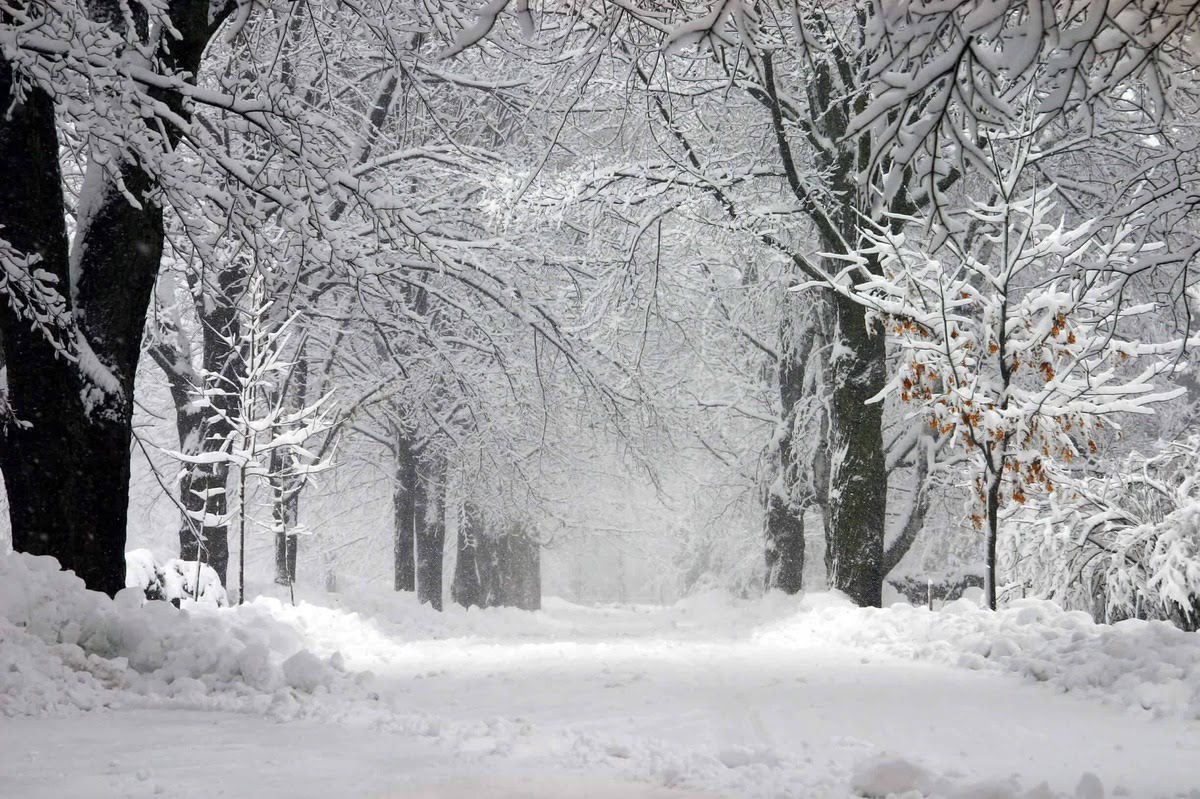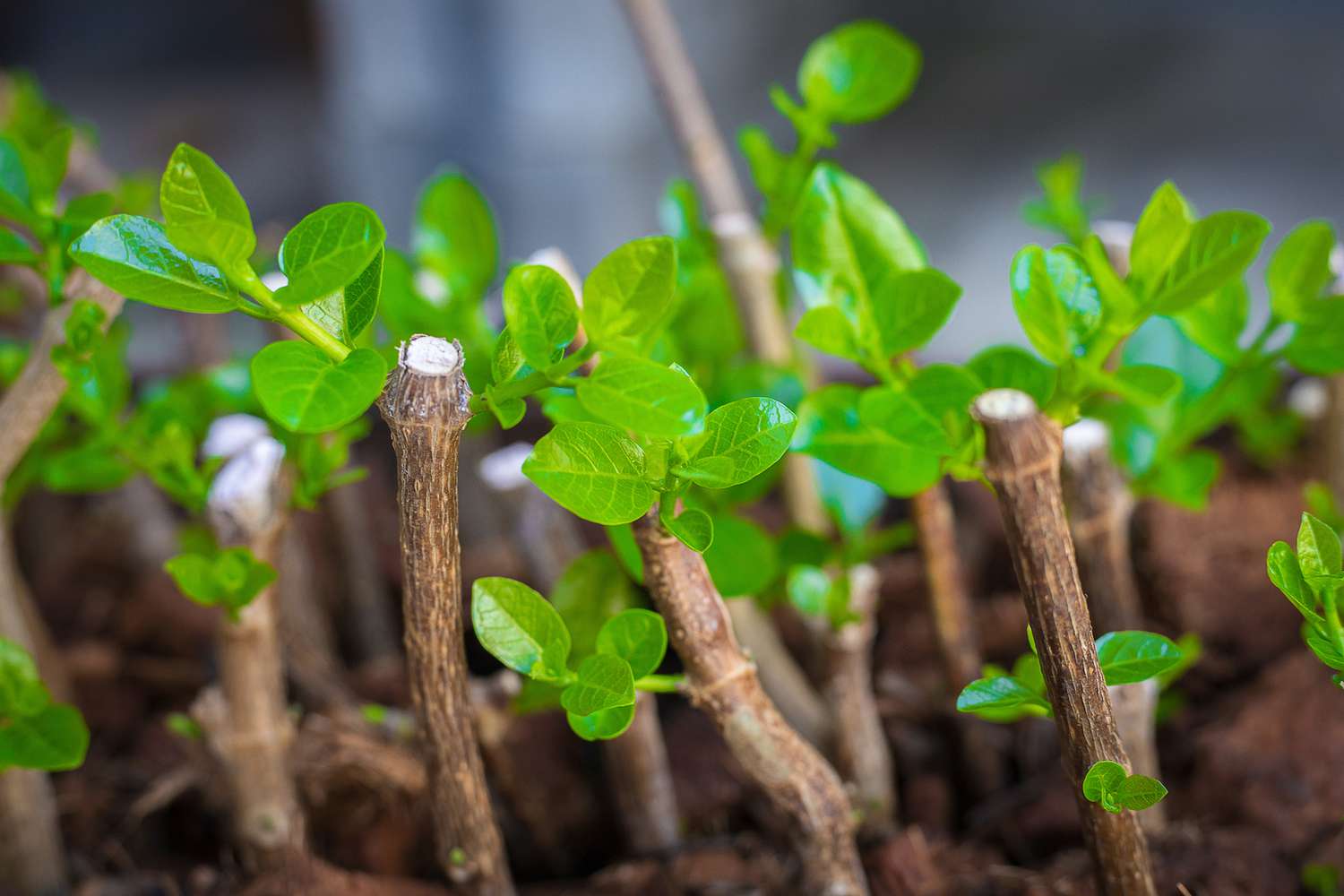Home>Gardening Techniques>Plant Care>How To Cut Back Banana Trees For Winter


Plant Care
How To Cut Back Banana Trees For Winter
Modified: January 22, 2024
Learn how to properly cut back banana trees for winter with this comprehensive guide on plant care. Keep your banana trees healthy and thriving through the colder months.
(Many of the links in this article redirect to a specific reviewed product. Your purchase of these products through affiliate links helps to generate commission for Chicagolandgardening.com, at no extra cost. Learn more)
Table of Contents
- Introduction
- Why Cut Back Banana Trees for Winter
- When to Cut Back Banana Trees
- Tools Needed
- Step 1: Gather Necessary Supplies
- Step 2: Observe the Banana Tree
- Step 3: Remove Dead or Damaged Leaves
- Step 4: Trim Back Excess Growth
- Step 5: Cut Back the Stalk
- Step 6: Mulching the Banana Tree
- Step 7: Protecting the Base of the Tree
- Step 8: Winter Care Tips for Banana Trees
- Conclusion
Introduction
Welcome to the world of plant care, where nurturing and tending to greenery is not just a hobby, but a way of life. Among the myriad of plants that bring beauty and vibrancy to our gardens, the banana tree stands tall as an exotic and tropical delight. With its large, lush leaves and bountiful clusters of fruit, the banana tree is a favorite among many garden enthusiasts.
However, as winter approaches, it becomes essential to take certain measures to protect your beloved banana tree from the cold weather and potential damage. One key step in winterizing your banana tree is cutting it back in preparation for the dormant season.
Cutting back your banana tree for winter serves several important purposes. First and foremost, it helps prevent wind damage by reducing the overall size and weight of the tree. By removing excess growth and trimming back the stalk, you’re ensuring that the tree is more resilient to the harsh weather conditions that winter brings.
Another reason to cut back your banana tree is to remove dead or damaged leaves. As the harsh temperatures of winter approach, these leaves can become susceptible to diseases and pests. By removing them, you’re not only promoting the overall health of the tree but also preventing the spread of any potential threats.
In this article, we will guide you through the process of cutting back your banana tree for winter, step by step. We will also provide you with some essential care tips to ensure the well-being and survival of your banana tree during the dormant season.
Why Cut Back Banana Trees for Winter
As the temperatures drop and winter sets in, it is crucial to understand why cutting back your banana tree is necessary. While it may seem counterintuitive to prune a healthy tree, there are several reasons why this practice is essential for the health and longevity of your banana tree.
Firstly, cutting back your banana tree reduces its overall size and weight. The large leaves and long stalks of a banana tree make it vulnerable to wind damage during the winter months. By trimming back the excess growth, you are reducing the chances of the tree being uprooted or damaged by strong winds.
Secondly, cutting back your banana tree allows you to remove dead or damaged leaves. As the winter temperatures drop, these leaves can become susceptible to diseases and pests. By removing them, you are preventing the spread of any potential threats and promoting the overall health of the tree.
Additionally, cutting back the tree helps to improve air circulation and sunlight exposure for the remaining leaves. This allows the tree to photosynthesize more efficiently, enabling it to store essential nutrients and energy for the upcoming growing season.
By cutting back your banana tree, you are also creating a more manageable and aesthetically pleasing shape. This can make it easier to protect the tree and provide it with the necessary care during the winter months.
Furthermore, cutting back the tree provides an opportunity to inspect the trunk and stalk for any signs of damage or disease. Identifying and addressing these issues early on can prevent further harm and increase the tree’s chances of surviving the winter.
Overall, cutting back your banana tree for winter is a proactive measure to protect it from wind damage, prevent the spread of diseases and pests, improve photosynthesis, and maintain its overall health. By investing the time and effort into properly pruning and caring for your banana tree, you are ensuring its longevity and future growth.
When to Cut Back Banana Trees
Knowing the optimal time to cut back your banana tree is crucial to ensure its health and prepare it for the winter months. Timing is everything when it comes to pruning, as cutting back too early or too late can have negative impacts on the tree’s growth and overall resilience.
The best time to cut back your banana tree is in the late fall or early winter, before the first frost arrives. This timing allows the tree to adjust and prepare for the dormant season without the added stress of extreme cold temperatures.
Keep an eye on the weather forecast for your area to determine the right time to prune. Once the temperatures start to consistently drop below 50°F (10°C), it is a good indication that you should begin the pruning process.
It is important to note that cutting back your banana tree too early in the season, when the weather is still warm, can stimulate new growth. This new growth is vulnerable to damage when the colder temperatures arrive, as it does not have enough time to become fully established. Therefore, it is recommended to wait until the temperatures have significantly cooled down before pruning your banana tree.
On the other hand, cutting back your banana tree too late in the season, after the first hard frost has occurred, can result in increased susceptibility to cold damage. The tree needs time to recover and seal off any wounds from pruning before the extreme cold sets in.
By timing your pruning correctly, you provide your banana tree with the best opportunity to heal, adjust, and prepare for the winter months. This ensures that the tree remains healthy and robust, ready to regrow and thrive when the warmer temperatures return.
Tools Needed
Having the right tools on hand is essential for successfully cutting back your banana tree. These tools will help make the pruning process easier and more efficient, ensuring that you can properly care for your tree.
Here are the tools you will need:
- Pruning Shears: These handheld scissors with sharp blades are perfect for trimming back leaves, stalks, and smaller branches. Look for pruning shears with a sturdy build and a comfortable grip to make your pruning experience more comfortable.
- Loppers: For thicker stalks and branches, loppers are your go-to tool. These long-handled pruners have strong, sharp jaws that can easily cut through thicker growth. Make sure to choose loppers that are sharp and durable for efficient and effective pruning.
- Saw: In some cases, you may encounter very thick or hard stalks that cannot be cut with pruning shears or loppers. In these instances, a saw will come in handy. A pruning saw with a curved blade and fine teeth is ideal for cutting through tough sections of the banana tree.
- Gloves: Pruning can be a thorny and messy task, so it’s important to protect your hands. Invest in a pair of sturdy gardening gloves that offer protection against thorns, sharp edges, and potential irritants.
- Protective Eyewear: When pruning, debris and potential hazards can fly into your eyes. Wearing protective eyewear will shield your eyes from any accidents or flying debris, ensuring your safety during the pruning process.
- Garden Disinfectant: To prevent the spread of diseases and pests, it is essential to clean your tools between cuts. Use a garden disinfectant spray or a mixture of bleach and water to sanitize your tools before moving on to the next section of the tree.
By having these tools readily available before you start pruning, you can ensure a smoother and more effective cutting back process. Remember to clean and maintain your tools properly after each use to prolong their lifespan and keep them in optimal condition.
Step 1: Gather Necessary Supplies
Before you embark on the task of cutting back your banana tree, it is essential to gather all the necessary supplies to ensure a smooth and efficient pruning process. By having everything you need readily available, you can avoid interruptions and complete the job more seamlessly.
Here are the supplies you will need:
- Pruning shears or loppers: These will be your main tools for cutting back the banana tree. Choose the appropriate size and type of pruning shears or loppers based on the thickness and accessibility of the branches and stalks you’ll be trimming.
- Saw (if needed): If you anticipate encountering thick or hard stalks that cannot be easily cut with pruning shears or loppers, have a pruning saw on hand.
- Gloves: Protect your hands from thorns, prickles, and any irritants by wearing a pair of sturdy gardening gloves. Look for gloves that offer both comfort and protection.
- Protective eyewear: Safeguard your eyes by wearing protective goggles or glasses. This will provide vital protection against any debris or flying particles that may occur during the cutting process.
- Garden disinfectant: To prevent the spread of diseases and pests, have a bottle of garden disinfectant spray or a mixture of bleach and water ready to sanitize your pruning tools between cuts.
- Trash bags or containers: Prepare a couple of trash bags or containers to collect the trimmings and any debris from the pruning process, making it easier to clean up afterward.
- Ladder or step stool: If your banana tree is tall, you may need a ladder or step stool to reach higher branches. Ensure that the ladder or step stool is sturdy and placed on a stable surface.
By gathering all the necessary supplies beforehand, you can save yourself time and frustration during the pruning process. Take a moment to check that each item is in good condition and easily accessible. This will set you up for a successful and efficient pruning session, keeping your banana tree healthy and ready for the winter season.
Step 2: Observe the Banana Tree
Before you start cutting back your banana tree, take a moment to carefully observe and assess its overall condition. This step is crucial as it allows you to identify any areas of concern and develop a plan for the pruning process.
Here are a few key things to look out for when observing your banana tree:
- Dead or damaged leaves: Take note of any leaves that appear brown, wilted, or with signs of disease or pest infestation. These leaves should be removed during the pruning process.
- Excess growth: Pay attention to any suckers or shoots that have sprouted from the base of the tree. These should be trimmed back to maintain a manageable size and promote healthier growth.
- Overgrown branches: Look for any branches that have become excessively long or are crossing or rubbing against each other. These branches should be pruned to improve air circulation and prevent potential damage.
- Thick stalks: If your banana tree has grown thick, woody stalks, assess whether any of them need to be cut back. Thin them out to improve the plant’s overall structure and encourage the growth of newer and healthier shoots.
By carefully observing your banana tree, you can gain a better understanding of its current state and identify areas that require pruning. This allows you to develop a plan of action, ensuring that you are addressing the specific needs of your tree. Taking the time to observe and assess will help you achieve a more targeted and effective pruning process, ultimately promoting the overall health and vitality of your banana tree.
Step 3: Remove Dead or Damaged Leaves
Once you have observed your banana tree and identified any dead or damaged leaves, it’s time to begin the pruning process by removing them. Removing these leaves is essential to keep your tree healthy and prevent the spread of diseases and pests.
Here’s how to remove dead or damaged leaves from your banana tree:
- Put on a pair of gloves to protect your hands from any thorns or sharp edges.
- Locate the dead or damaged leaves on the tree. These leaves are typically brown, wilted, or showing signs of disease or pest damage.
- Using your pruning shears or loppers, carefully cut the leaves as close to the base as possible. Make sure not to damage any healthy leaves or the main stalk of the tree.
- Dispose of the removed leaves in a trash bag or container. Do not leave them near the tree, as they may contain diseases or pests that can spread back to the plant.
- Continue inspecting the tree for any additional dead or damaged leaves and repeat the process of removing them.
Removing dead or damaged leaves not only improves the aesthetic appeal of the tree but also promotes better overall health. By eliminating these leaves, you prevent the tree from wasting energy on maintaining them and redirect its resources towards new growth and fruit production.
Remember to disinfect your pruning tools with a garden disinfectant spray or a mixture of bleach and water between cuts to prevent the spread of any diseases or pests from one leaf to another.
By diligently removing dead or damaged leaves, you are taking a proactive step in caring for your banana tree and setting a strong foundation for the rest of the pruning process.
Step 4: Trim Back Excess Growth
After removing dead or damaged leaves, it’s time to trim back any excess growth on your banana tree. This step is important to maintain a manageable size and promote better airflow and sunlight penetration within the tree canopy.
Follow these steps to trim back excess growth on your banana tree:
- Identify any suckers or shoots that have sprouted from the base of the tree. These are offshoots that can divert nutrients and energy away from the main tree.
- Using pruning shears or loppers, cut the suckers or shoots as close to the base as possible. Make clean cuts to minimize the risk of introducing diseases or pests to the tree.
- Trim back any excessive new growth on the main stalks or branches. Look for long, thin branches that are crossing or rubbing against each other and remove them.
- Pay attention to the overall shape and structure of the tree. Trim any branches or growth that are creating an imbalanced or overcrowded appearance.
- Step back and observe the tree after each trimming to ensure you are achieving the desired result. Aim for a well-balanced and open canopy that allows airflow and sunlight to reach all parts of the tree.
It’s important not to over-prune your banana tree, as this can stunt its growth or weaken its overall health. Only trim back excess growth that is necessary to maintain the structural integrity and aesthetics of the tree.
As you trim, remember to clean your pruning tools with a garden disinfectant spray or a mixture of bleach and water between cuts. This helps prevent the spread of diseases or pests. Dispose of the trimmed foliage in a trash bag or container away from the tree.
By carefully trimming back excess growth, you are creating a healthier and more visually appealing banana tree. This step also sets the stage for the next crucial step in pruning – cutting back the main stalk of the tree.
Step 5: Cut Back the Stalk
Cutting back the main stalk, also known as the pseudostem, is one of the most important steps in pruning a banana tree. This process helps reduce the tree’s size, promotes better fruit production, and prepares it for the winter months. However, it’s crucial to approach this step with care and precision.
Follow these steps to cut back the stalk of your banana tree:
- Assess the height of the main stalk and determine how much you need to cut back. Consider factors such as the overall size of the tree, its environment, and the space available in your garden.
- Using a sharp pruning saw, make a clean and angled cut near the base of the banana tree. Aim to remove about one-third to one-half of the stalk’s height. Do not cut too close to the ground, as this can damage the root system.
- Inspect the inside of the stalk that has been cut. Look for any signs of soft or rotting tissue, which may indicate fungal or bacterial infection. If you notice any diseased tissue, use a clean knife or saw to remove the affected areas.
- Apply a garden disinfectant or a mixture of bleach and water to the cut surface of the stalk to inhibit the growth of any potential pathogens. This step helps prevent diseases from entering the plant through the wound.
- Dispose of the cut stalk in a trash bag or container away from the tree. Do not leave it in the garden, as it can attract pests or contribute to the spread of diseases.
- Observe the overall balance and appearance of the banana tree after cutting back the stalk. Adjust the remaining leaves and branches if needed to create a symmetrical and visually pleasing shape.
Remember that cutting back the stalk should be done with caution and only during the appropriate time of year. Cutting too much or too early can hinder the tree’s growth and fruit production.
By skillfully cutting back the stalk, you are promoting a stronger and more productive banana tree. This step, combined with the previous pruning actions, will help ensure the successful winterization and future growth of your beloved banana tree.
Step 6: Mulching the Banana Tree
Once you have completed the pruning process, it’s time to provide your banana tree with an extra layer of protection by mulching. Mulching helps insulate the soil, retain moisture, and regulate temperature, creating a favorable environment for the roots during the winter months.
Follow these steps to mulch your banana tree:
- Clear any weeds, debris, or fallen leaves from around the base of the tree. This will create a clean surface for applying the mulch.
- Choose an organic mulch such as straw, wood chips, or compost. These materials are ideal for retaining moisture and providing insulation. Avoid using inorganic mulches like rocks or plastic, as they don’t offer the same benefits.
- Spread a layer of mulch around the base of the banana tree, extending it out to cover the area within the drip line (the area beneath the outermost part of the tree’s canopy).
- Aim for a mulch layer that is approximately 3-4 inches (8-10 cm) thick. This thickness provides adequate insulation while still allowing air and water to reach the root system.
- Avoid piling the mulch directly against the trunk of the tree, as this can promote moisture buildup and encourage rot or pests. Leave a small gap around the base of the tree.
- After mulching, gently water the area around the banana tree. This will help settle the mulch and ensure it stays in place.
Mulching provides numerous benefits for your banana tree. It helps regulate soil temperature, prevents moisture loss, suppresses weed growth, and contributes organic matter to the soil as the mulch breaks down over time.
Remember to replenish the mulch layer periodically, especially if it becomes compacted or begins to break down. This will ensure that your banana tree continues to receive the full benefits of mulching throughout the winter and beyond.
By mulching your banana tree, you are providing it with an added layer of protection and creating an optimal environment for its roots to thrive during the dormant season.
Step 7: Protecting the Base of the Tree
In addition to mulching, it’s important to take measures to protect the base of your banana tree, especially in colder climates where frost and freezing temperatures are a concern. Safeguarding the base of the tree helps prevent damage from frost heaving, which can dislodge the roots and cause stress to the plant.
Follow these steps to protect the base of your banana tree:
- Inspect the base of the tree for any cracks or openings that could allow cold air to penetrate. If you find any, consider using a tree wrap or burlap to cover and insulate these vulnerable areas.
- Surround the base of the tree with a layer of straw or hay. This extra insulation helps keep the soil temperature more consistent and protects the roots from freezing.
- Carefully pile fallen leaves or pine needles around the base of the tree for added insulation. These natural materials create a blanket that helps retain warmth and shields the roots from extreme cold.
- If your area experiences prolonged periods of freezing temperatures, consider using a protective cover such as a frost blanket or tarp. Secure the cover loosely around the tree, ensuring it reaches down to the ground to create a mini greenhouse effect.
- Monitor the weather regularly and remove the protective cover during milder spells to allow air circulation and prevent excess moisture buildup.
Protecting the base of your banana tree helps preserve the health and integrity of the plant. By insulating the roots, you minimize the risk of cold damage and increase the likelihood of a successful regrowth in the following season.
Remember to remove any protective coverings once the danger of frost has passed and temperatures consistently remain above freezing. This will prevent the tree from becoming too warm and encourage a healthy transition into the growing season.
By taking the necessary steps to protect the base of your banana tree, you are ensuring its resilience and enabling it to withstand the challenges of winter weather.
Step 8: Winter Care Tips for Banana Trees
As winter sets in, it’s important to provide ongoing care for your banana tree to ensure its well-being and survival during the dormant season. Follow these winter care tips to help your banana tree thrive and return stronger in the following growing season:
- Monitor moisture levels: Check the soil moisture regularly and ensure it remains consistently damp but not waterlogged. Water the tree sparingly during the winter months, as excessive moisture can lead to root rot.
- Protect from extreme cold: If your area experiences extremely low temperatures, consider erecting a temporary shelter or enclosure around the banana tree. This can be created using stakes and clear plastic or blankets, allowing for some air circulation while protecting the tree from frost and freezing winds.
- Remove snow buildup: If snow accumulates on the leaves or branches of your banana tree, gently brush it off to prevent the weight from causing breakage or damage to the plant.
- Avoid fertilization: Refrain from fertilizing your banana tree during the winter months, as it is in a dormant state and does not require extra nutrients. Wait until the spring, when the tree begins actively growing again.
- Monitor for pests and diseases: Check for signs of pests or diseases regularly, even during the winter months. Look out for any discoloration, unusual growths, or pest activity. If you notice any issues, take appropriate measures to address them promptly.
- Prune as needed: Throughout the winter, continue to monitor your banana tree and prune any additional dead or damaged leaves or branches that may appear. This helps maintain the health and neatness of the tree.
- Resume regular care in spring: As the temperatures start to rise and the frost danger has passed, slowly reintroduce regular care for your banana tree. Gradually increase watering and fertilizer applications to support new growth.
By implementing these winter care tips, you are providing your banana tree with the necessary support to withstand the challenges of the dormant season. With proper care and attention, your tree will emerge from the winter stronger and ready to thrive once again.
Conclusion
Cutting back your banana tree for winter is a vital step in ensuring its health and longevity. By following the steps outlined in this article, you can effectively prune your banana tree, protect it from the harsh winter elements, and set it up for success in the upcoming growing season.
By cutting back excess growth and removing dead or damaged leaves, you promote better airflow, reduce the risk of diseases and pests, and maintain the tree’s overall health and appearance. Trimming the main stalk of the tree helps manage its size, encourages better fruit production, and prepares it for the dormant season.
Don’t forget to mulch around the base of the tree to provide insulation and protect the roots from freezing temperatures. Taking precautions to shield the base of the tree further aids in its resilience against frost and freezing conditions.
Throughout the winter, it’s crucial to continue monitoring and providing appropriate care for your banana tree, such as maintaining soil moisture levels, protecting it from extreme cold or snow buildup, and addressing any pest or disease issues that may arise.
By incorporating these winter care tips into your routine, you can help your banana tree withstand the challenges of winter and emerge stronger and healthier when spring arrives.
Keep in mind that different banana tree varieties may have specific care requirements, so it’s beneficial to research and understand the needs of your particular tree. By investing time and effort into properly caring for your banana tree, you will be rewarded with a thriving and beautiful addition to your garden.
